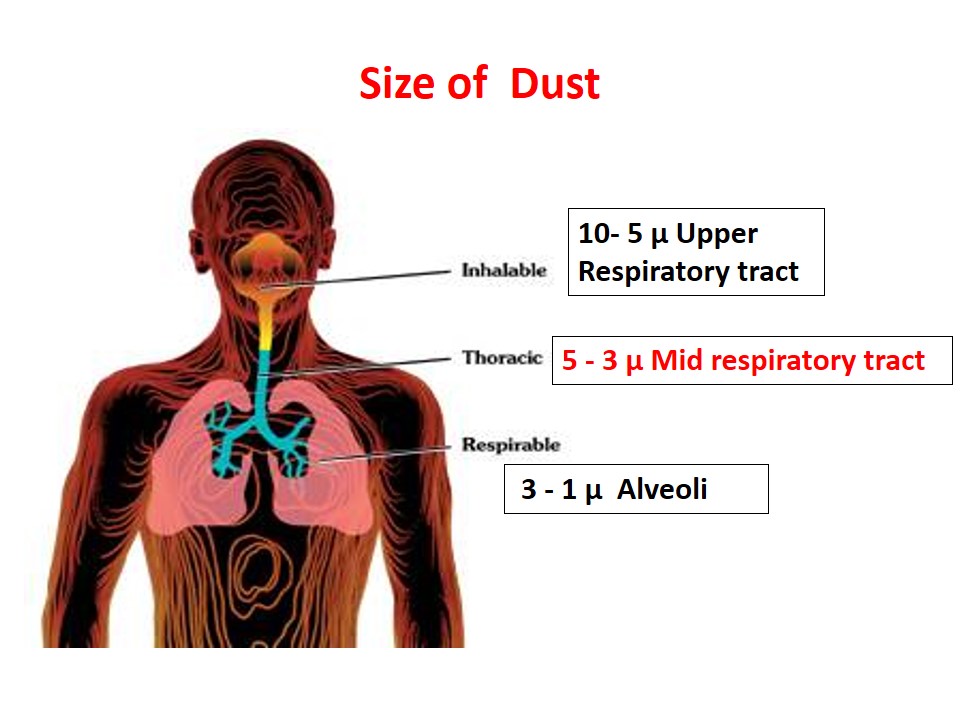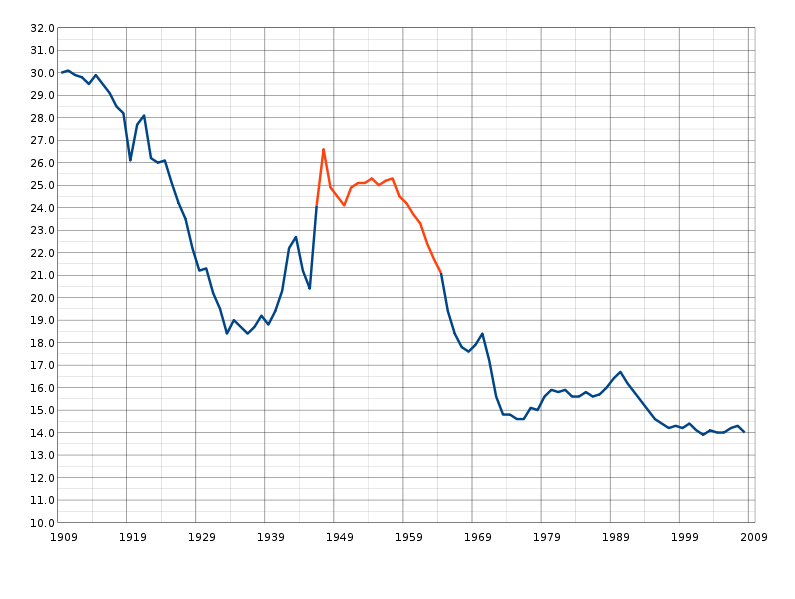Pneumoconiosis is a group of lung diseases which result from inhalation of dust in certain occupations.
To better understand let’s consider a coal mine which contains approximately 800-1000 particles/ml, a worker there will inhale between 100 to 150 grams of dust yearly. Of the dust inhaled, about 1 to 10 grams is deposited in the alveoli, but only about 0.5 g is permanently retained. After 40 years of working, this amounts to 20 grams, half as much as the weight of the normal dried lung!!
Classification of Pneumoconiosis
• Benign Pneumoconiosis
• Simple Pneumoconiosis
• Complicated Pneumoconiosis
Benign Pneumoconiosis
In benign pneumoconiosis dust is not able to produce fibrosis. Examples include:
– Baritosis: caused by pure Barium sulphate and oxide
– Siderosis: caused by ferric oxide
– Titanosis: caused by titanium oxide
– Chalkosis: caused by calcium salts
Simple Pneumoconiosis
In simple pneumoconiosis, inhaled dust causes only minimal fibrosis. Examples include:
– Silicatosis: caused by inhalation of complex silicates (not free silica) e.g., clays
– Vegetable dust pneumoconiosis:
• Mill fever: caused by organic dust
• Byssinosis: caused by cotton dust
• Farmer’s lung: caused by grain dust
• Bagassosis: caused by sugar-cane fibres
Complicated Pneumoconiosis
In complicated pneumoconiosis dust produces progressive massive fibrosis. Examples include:
– Silicosis: caused by inhalation of free crystalline Silica SiO2
– Asbestosis: caused by inhalation of fibrous tri-magnesium silicates
– Talcosis: caused by inhalation of talc powder
– Coal miner’s pneumoconiosis: caused by inhalation of coal dust
Factors affecting the development of disease
(by deposition of dust particles in the respiratory system)
• Nature and chemical composition
• Size of dust particles
• Concentration of dust in atmosphere
• Duration of exposure
• Individual susceptibility
Nature and Chemical Composition
a. Inorganic dusts
e.g. Silica, Asbestos produce massive progressive fibrous reaction in the lung
b. Organic dusts
e.g. Cotton dust, grain dust, sugar-cane fiber cause asthma and bronchitis.
Size of Dust Particles
• 10-5 μ: Removed from upper respiratory tract
• 5-3 μ: Deposited in the mid respiratory tract
• 3-1 μ: Deposited directly in the alveoli
• < 1 µ: Move in and out of the alveoli with air,
– may be deposited in alveolar wall by impaction, or being caught by alveolar movement
Study of Common Pneumoconiosis
Silicosis
Pathological condition of the lung due to inhalation of particulate matter containing free silica or uncombined silica (SiO2) is known as silicosis.
Permanent scarring of the lungs is caused by inhaling silica (quartz, SiO2) dust. It is slowly progressive, nodular, fibrosing pneumoconiosis.
Common Occupations with Exposure to Silica
• Mines
• Porcelain
• Sand bricks industry
• Glass industry
• Gun industry
• Grinding of metals using sand stone
Pathology
Fibrotic nodules develop by a particular process in which fibrous tissue is laid down in concentric rings around a central core of silica particles as an onion.
Manifestations
Manifestations include symptoms such as:
• shortness of breath while exercising
• fever
• occasional bluish skin at ear lobes or lips
• fatigue
• loss of appetite
Types of Silicosis
(based on amount of exposure and length of time)
Chronic
Chronic silicosis occurs after 10 or more years of mild overexposure to silica. It is the most common of all types and may go undetected for years.
Accelerated
Accelerated type develops between 5 and 10 years of moderate overexposure.
Acute
Acute variety develops within weeks up to five years due to breathing very large amounts of silica.
Asbestosis
Asbestosis is the diffuse fibrosis of the lung parenchyma. Asbestos fibers are highly resistant to heat, acids and chemicals are were widely used in industries. Asbestos was banned from use globally since 1973 because it is highly carcinogenic.
Asbestosis is characterized by parenchymal lung fibrosis with or without pleural involvement due to inhalation of asbestos fibres. It is more dangerous than silicosis as it predisposes to bronchogenic carcinoma and mesothelioma of the pleura and peritoneum.
Complications
• Bronchogenic carcinoma
• Mesothelioma
Prevention of Pneumoconiosis
Medical measures
• Pre-employment examination
• Periodic examination
- Conducted every year
- Include LFT
- If susceptible worker (significant effect across shift after few month of exposure) should be transferred to other job
• Health education
• Nutrition
• Prohibition of smoking
Engineering Controls
• Designing-building, Work station
• Good Housekeeping, wet mopping
• Ventilation
• Mechanization, Vacuum cleaning
• Substitution
• Enclosure machine dust
• Isolation/Segregation
• Local Exhaust Ventilation
• Personal Protective Devices
• Work Environment Monitoring
• Statistical Monitoring
 howMed Know Yourself
howMed Know Yourself




